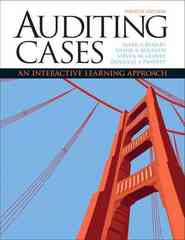
This question guides you to think about the nuances of fiscal stimulus. As explained in class, the government can stimulate the economy through giving people tax cuts. In this question, we will simply the policy to think of it as directly handing people money. This question guides you through thinking about how exactly to carry out the policy. Suppose the U.S. population consists of 80 million poor people, 200 million middle class people, and 20 million rich people. Suppose there are only three kinds of consumption: food, shelter, and diamonds. Let's introduce a new concept called "marginal propensity to consume" (MPC). A person's MPC is how much out of each additional dollar given to him will spent in consumption. For instance, if for even dollar of income given to me, I spend 70 cents, then my MPC is 70%. (a) Please compute the MPC for the poor, the middle class, and the rich using the information below. i. For every dollar given to the poor, they spend 70 cents on food, 25 cents on shelter, and save the rest. ii. For every dollar given to the middle class, they spend 40 cents on food, 40 cents on shelter, and save the rest. iii. For every dollar given to the rich, they spend 5 cents on food, 15 cents on shelter, 30 centers on diamond, and save the rest. (b) Suppose the government has a budget of $1 trillion that it can give to only one of the three population. i. Suppose the government's goal is to increase consumption as much as possible without regard to what is being consumed. Who should the government give the money to, and why? ii. Suppose the government wants to stimulate consumption on shelter. Who should the government give the money to, and why? This question guides you to think about the nuances of fiscal stimulus. As explained in class, the government can stimulate the economy through giving people tax cuts. In this question, we will simply the policy to think of it as directly handing people money. This question guides you through thinking about how exactly to carry out the policy. Suppose the U.S. population consists of 80 million poor people, 200 million middle class people, and 20 million rich people. Suppose there are only three kinds of consumption: food, shelter, and diamonds. Let's introduce a new concept called "marginal propensity to consume" (MPC). A person's MPC is how much out of each additional dollar given to him will spent in consumption. For instance, if for even dollar of income given to me, I spend 70 cents, then my MPC is 70%. (a) Please compute the MPC for the poor, the middle class, and the rich using the information below. i. For every dollar given to the poor, they spend 70 cents on food, 25 cents on shelter, and save the rest. ii. For every dollar given to the middle class, they spend 40 cents on food, 40 cents on shelter, and save the rest. iii. For every dollar given to the rich, they spend 5 cents on food, 15 cents on shelter, 30 centers on diamond, and save the rest. (b) Suppose the government has a budget of $1 trillion that it can give to only one of the three population. i. Suppose the government's goal is to increase consumption as much as possible without regard to what is being consumed. Who should the government give the money to, and why? ii. Suppose the government wants to stimulate consumption on shelter. Who should the government give the money to, and why







